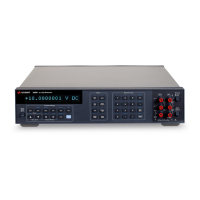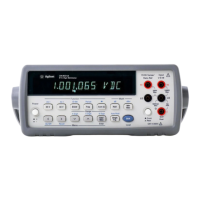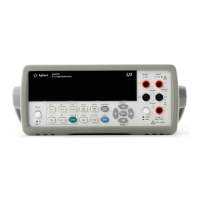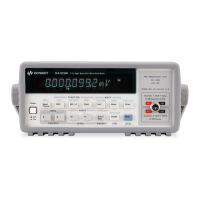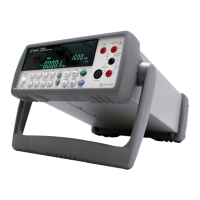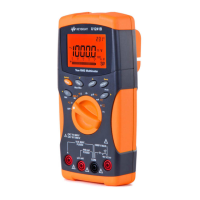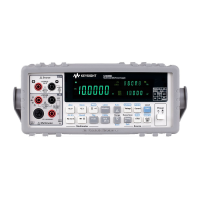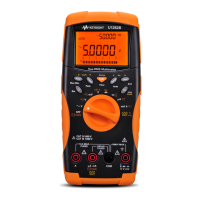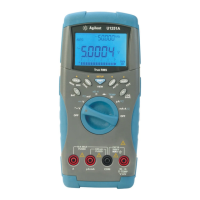46 34410A/11A/L4411A User’s Guide
2Features and Functions
Configuring Frequency and Period Measurements
For frequency and period measurements, your menu selections are: CONFIGURE,
GATE TIME, RANGE, AC FILTER, NULL and NULL VALUE.
• CONFIGURE: Allows you to select either FREQUENCY or PERIOD as the primary
measurement.
• GATE TIME: Allows you to select one of four choices (0.001, 0.01, 0.1, or 1) for
gate time, in seconds.
• RANGE: Allows you to let the multimeter automatically select the range using
the autoranging feature (select AUTO), or you may select a fixed range
(select MANUAL).
• AC FILTER: Allows you to select from three choices (3 HZ : SLOW,
20 HZ : MEDIUM, or 200 HZ : FAST). The ac filter allows you to trade off
low–frequency bandwidth versus ac settling time.
• NULL: Allows you to enable (ON) or disable (OFF) the null measurement
feature, which measures the difference between a stored null value and the
input signal.
• NULL VALUE: Allows you to view and edit the null value (if enabled).
Configuring Temperature Measurements
For temperature measurements, your menu selections are: PROBE TYPE, OFFSET
COMP, AUTO ZERO, INTEGRATION, NULL, NULL VALUE, and UNITS.
• PROBE TYPE: Allows you to select from four choices (RTD–4W, RTD–2W,
THERMISTOR–2W, or THERMISTOR–4W) of temperature probe type.
• OFFSET COMP (for RTD probes only): Allows you to enable (ON) or disable
(OFF) the offset compensation feature. With offset compensation enabled,
the multimeter makes a normal temperature measurement first, followed by
a second measurement to determine any offset voltage in the input
circuitry. The resultant displayed measurement corrects for this offset.
Enabling offset compensation increases measurement time.
• AUTO ZERO: Allows you to enable (ON) or disable (OFF) the auto zero feature
for 2–wire temperature measurements. This feature subtracts a subsequent
zero reading from each measurement.
Note that 4–wire temperature measurements are automatically made
with auto zero always on.
• INTEGRATION: Allows you to set the integration time for the measurement in
two ways; in power–line cycles (NPLC) or in seconds (APERTURE).
UG_ED5.book Page 46 Thursday, March 1, 2012 11:28 AM
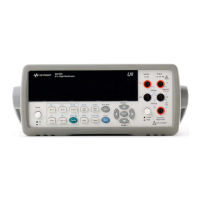
